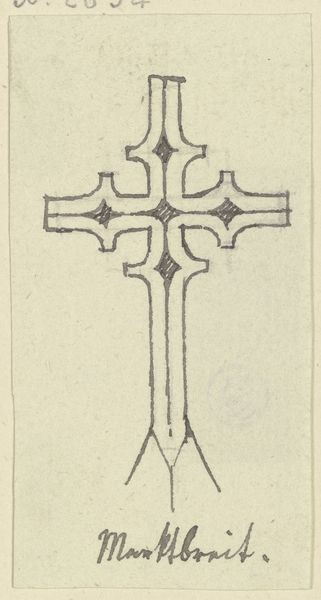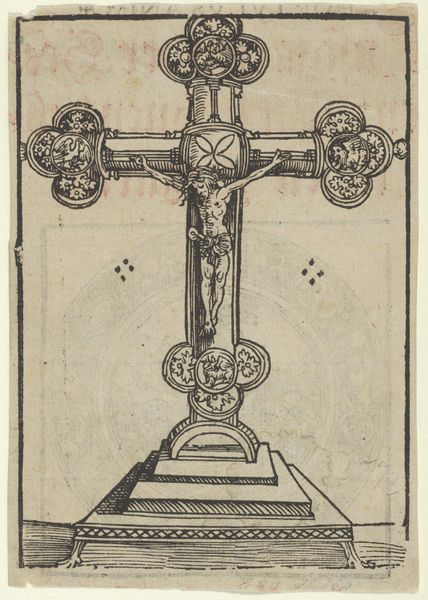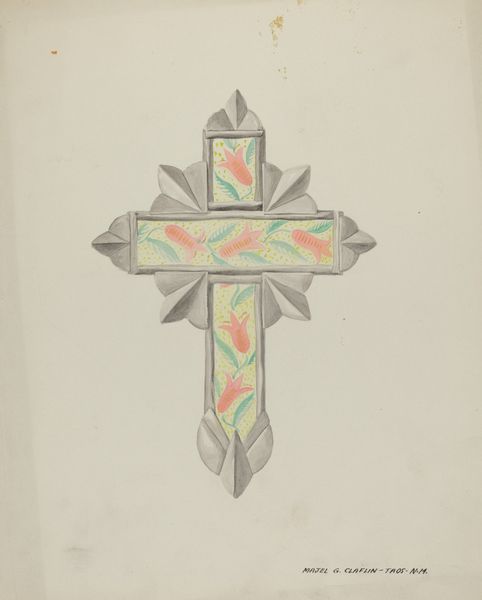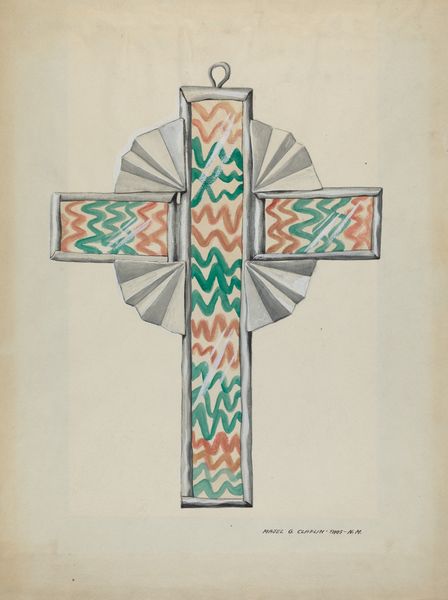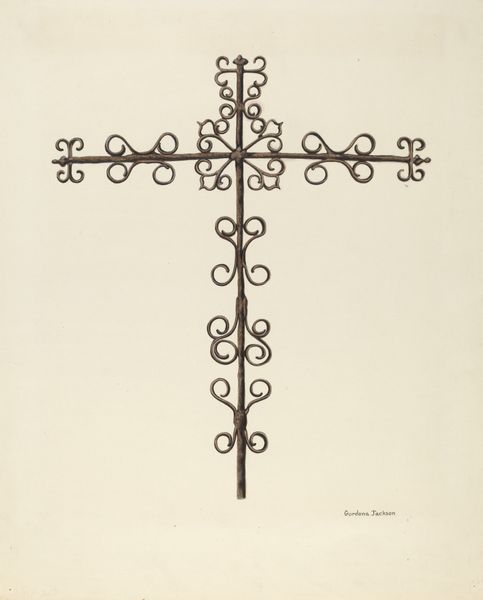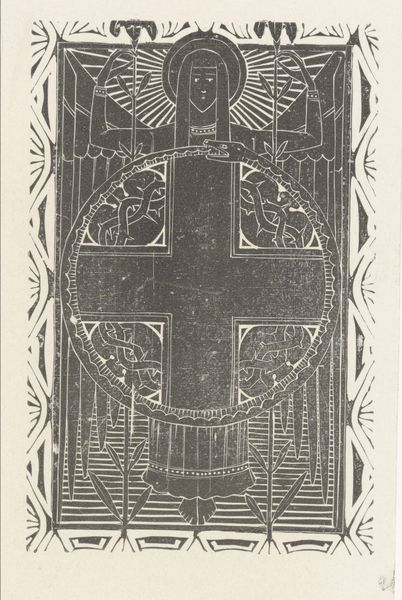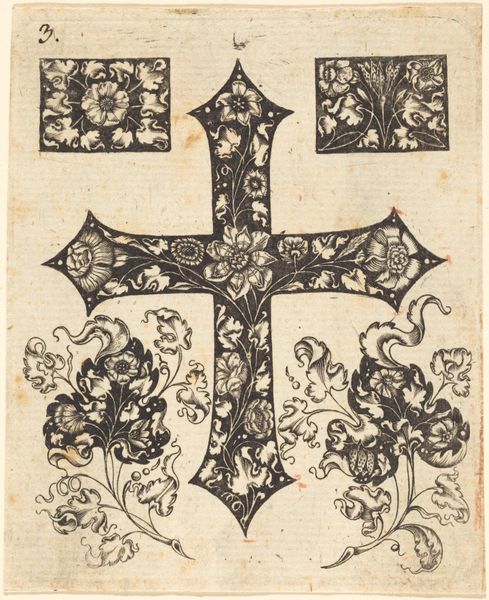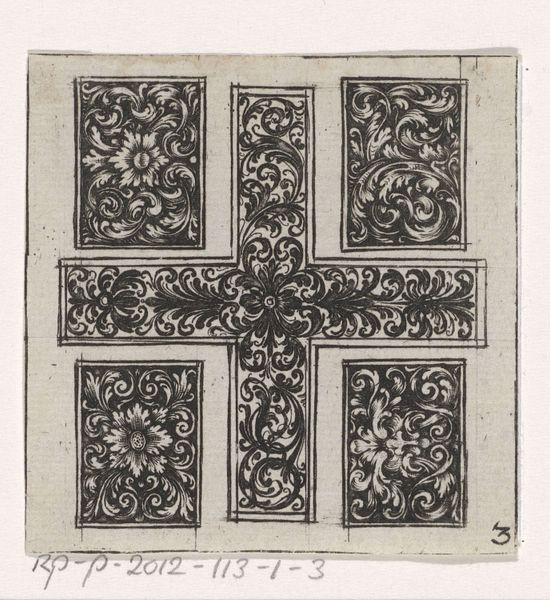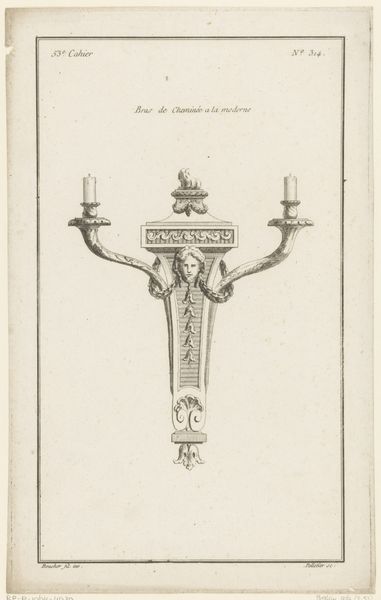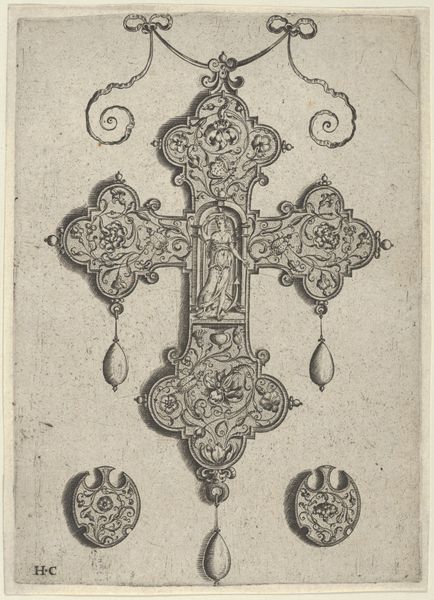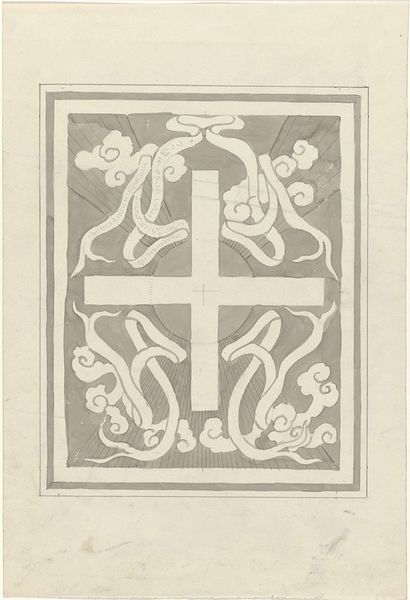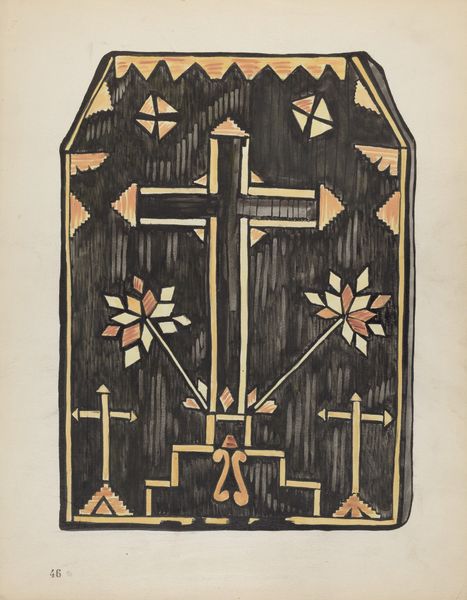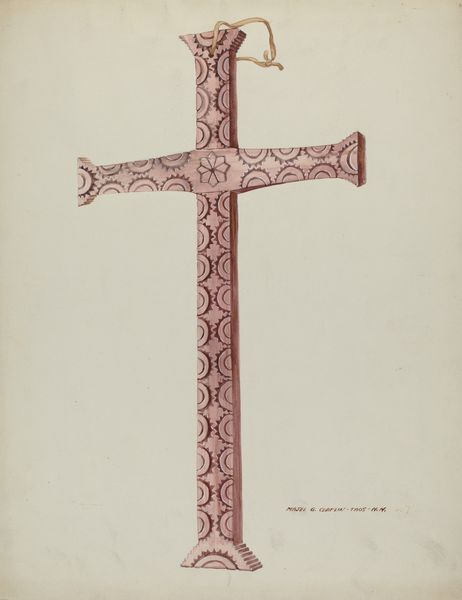
print, engraving
#
baroque
# print
#
geometric
#
line
#
engraving
Dimensions: height 47 mm, width 36 mm
Copyright: Rijks Museum: Open Domain
Curator: We’re looking at a print called "Kruis," or "Cross," by Isaac Walraven. It dates sometime between 1696 and 1765 and is rendered as an engraving. The ornate pattern strikes me immediately. What are your first impressions? Editor: It’s stark. Black ink against aged paper, the sharp contrast amplifies the central cross form. The details within soften the rigid geometry. You see a confluence of stark lines against flowing shapes. It's small, delicate. What can you tell me about Walraven? Curator: Walraven worked during a period of intense religious and political upheaval. Considering this context, how do we reconcile the object itself as an emblem? Is it submissive, is it reverent, or perhaps…resistant? I wonder how contemporary eyes understood this familiar symbol against a shifting world order. Editor: That contrast between the turbulence of the time and the quietness of this devotional print is powerful. The making process, the labor, that deliberate act of etching lines onto a plate to replicate an idea, for mass consumption even – how does that contribute to the reception? And how does its form meet its function? Was it for personal meditation, or distributed more broadly as a religious symbol? Curator: Considering the period, access to such religious iconography through print would be groundbreaking. These materials transcend religious doctrine by finding their way into social dialogues about morality, power and salvation. These prints carry a political weight, reflecting tensions regarding religion. Editor: It shows how even a familiar, ostensibly static symbol like the cross isn’t immutable. Labor creates a dynamic interplay that adds additional significance. Something hand-wrought, and now distributed and accessed in volume. Curator: Ultimately, this image prompts reflection. It highlights the way seemingly steadfast emblems can be reshaped and imbued with resistance within shifting sociopolitical landscapes. Editor: It really brings together that idea that art objects always hold meaning far beyond their form, deeply entwined with their production and their moment.
Comments
No comments
Be the first to comment and join the conversation on the ultimate creative platform.
